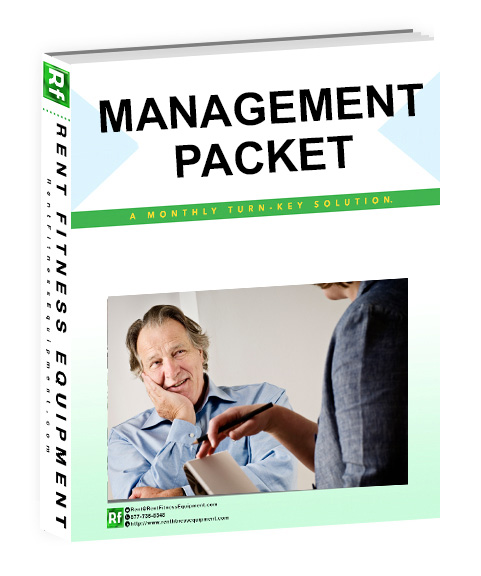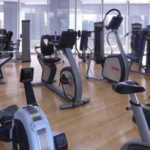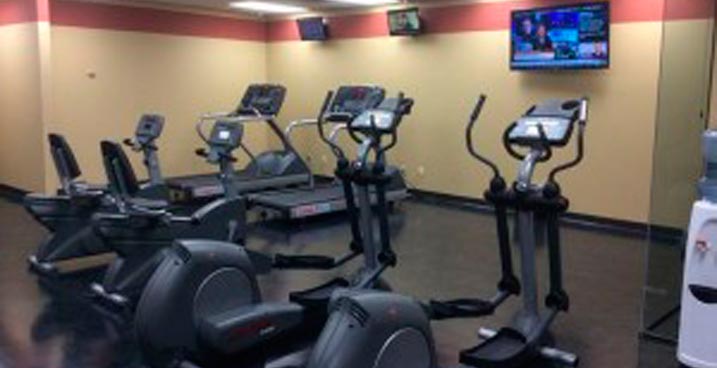Make Your Fitness Center Good Fit For Your Condo Residents
Make Your Fitness Center Good Fit For Your Condo Residents.
A well-designed fitness room or gym can be a great amenity at a condo association. Owners and residents of a property with a smartly equipped fitness area can reap great rewards.

Click the button below to tell us where to FedX it!
Get Your FREE Fitness Room Packet (For Management)
As Chris Gallagher of Direct Fitness Solutions says, “residents save time and the out-of-pocket expenses of joining a traditional gym, build stronger relationships with neighbors, and develop pride in the property.” He continues, “if residents get involved in their community because of the relationships that started in the gym or if a prospective resident makes a decision to buy based on hearing great things about the gym, the other owners also benefit.”
As Chris Gallagher of Direct Fitness Solutions says, “residents save time and the out-of-pocket expenses of joining a traditional gym, build stronger relationships with neighbors, and develop pride in the property.” He continues, “if residents get involved in their community because of the relationships that started in the gym or if a prospective resident makes a decision to buy based on hearing great things about the gym, the other owners also benefit.”
From time to time, the lobby and other common areas need new furnishings, carpet, and paint. Fitness centers are no exception. With a wide array of fitness trends and equipment options at different levels of technology, it’s important to understand how your residents view fitness within the community. Regardless of whether you are installing a brand new gym or just updating the existing gym, there is a lot to consider.
Current situation: The community association and condo market is on an upswing. Condo sales are trending up for a variety of reasons. Buildings are competing to win over prospective buyers with the best amenities, which can include a fitness center. Recently, more properties are trying to have a truly state of the art fitness center to attract purchasers to their building and to increase the value of the homes and quality of life within their association.
Implications: The real estate market is still recovering so there is a lot of competition and a lot of choices for buyers. Part of the challenge is how to stand apart from similar types of homes at other properties. In the case of younger buyers, the real estate sales battle could be won at the fitness facility. According to a 2011 International Health, Racquet, and Sports Club Association study, 25 to 34 year olds have the largest number of gym memberships compared to the total population.
Considerations: A good place to begin thinking about a fitness center should start around your community. If your goals to attract or retain younger community members, it is safe to assume this group has seen and experienced the latest exercise equipment. Providing an experience that misses the mark can lead residents to join better equipped health clubs. Surveying current residents is an excellent way to gauge their interest in exercising and gyms.
If your community prides itself on the latest and greatest, fitness equipment now offers a multitude of entertainment options and connectivity to Facebook and other Internet sites. Phil Pritzker of The Habitat Company and General Manager of 400 Randolph Condominiums which recently renovated their outstanding Health Club adds “Another consideration is how your residents or prospects look at your property compared to others. “
Gallagher offered this example, “we recently assisted an older property with new competition nearby address declining unit values in part by renovating the fitness center and installing exercise options that included personalized entertainment. If the selling point of the gym is convenience and or cost savings, it has to provide similar experiences to what is offered locally to be effective.
Gym Equipment as a Monthly Service!
Maximizing Use: Location, location, location Fitness centers can be a significant investment. Property boards quickly regret gyms when they sit empty for long periods of time. Thinking about your fitness center as a stand-alone business can be helpful in making choices about locations. Consider whether the fitness center is easy to find, easy to reach, and in a secure area of the condo.
Hard to locate or poorly lit locations will turn off exercisers. Conversely, fitness spaces with outside views and quick access to lobby areas are both pleasing and reassuring to residents. Security is a concern with most unsupervised spaces, particularly during odd hours of the day. Locating the gym in a well trafficked area can assure residents that someone is almost always around. Gallagher adds, “At another property, management boosted the value of the fitness center by moving it from a basement space into a more ideal space occupied by an underutilized billiard room.”
Pritzker concurs with Gallagher in this area and adds, ” An impressive fitness facility in a prime location can send a powerful message to prospective buyers and residents even if they are not die-hard exercisers.”
Safety: Community Associations that take a proactive approach to resident safety in the gym will avoid unhappy residents down the road. As simple as it seems, a primary consideration is the exercise equipment. Gallagher contends “Exercise equipment should be uncomplicated, reliable, and easy-to-use in an unsupervised setting.” Equipment types must be carefully considered. Gallagher continues “for example, a condo complex needed to reconsider its strength equipment choice after learning that free weights presented more potential liability than a weight lifting system where weight stacks are contained within the equipment.”
If the exercise equipment seems complicated, ask if the equipment has easy to understand instructions on it. Most suppliers are willing to provide signs as a backup. The terms and conditions of the gym should be included in either rental or ownership documents, and “it’s important to review them periodically to make sure they are up to date,” says Gallagher. Malfunctioning equipment may also present safety concerns. Similar to a car, exercise equipment requires upkeep. Most manufacturers provide preventative maintenance services. Some equipment suppliers offer onsite employee training to perform upkeep services as well.
Technology: The latest fitness equipment has options that connect to both cable and the Internet. Some fitness centers are served well by one television where others find personal choices better. Gallagher offers, “One property found residents complaining about the content and noise level of a single television in the fitness room and replaced it with personalized options requiring headphones.” The more advanced personal entertainment systems require other systems like digital cable receivers and/or dedicated servers.
The timing and coordination of system, cabling, and fitness equipment is key to avoiding resident frustration on opening day. Some fitness equipment manufacturers offer systems to remotely monitor equipment. Community associations, “can use a system like this to spot a problem, move equipment around to even use, and figure out what equipment residents are really using,” he said. Spotting issues early keep downtime to a minimum and keep residents happy.
Promotion and Programs: Regular promotion of the fitness center to residents via email, pamphlets, and social media is a key to maintaining visibility of this amenity. Contests or other types of fitness events can be a great way to encourage fitness center use and help build personal relationships within the community. Examples include distance running contests, triathlons in facilities that have pools, and weight loss challenges.
Keeping fitness center programs fresh and in sync with national trends has proven successful in health clubs and the same principles can be applied to the community association gym. Depending on the size of the space, group classes like Zumba or Yoga classes can help diversify and boost use of the fitness space. Developing a list of freelance personal trainers is an effective way of offering a benefit without adding headcount but potentially adding a revenue stream.
Freelance personal trainers can help keep residents in shape
Take your gym to the next level: Fitness facilities or gyms in a community association property are nothing new. Although, “expectations around the fitness center are changing, says Elena Lugo of FirstService Residential. “Some residents are looking for best-in-class fitness experiences and constantly comparing their fitness center or gym to another condo or the fitness club nearby.”
Gallagher concludes, “getting the most out of your gym requires knowing your resident’s attitudes about the gym and fitness, what is available nearby, where the gym is located on the property and regular reminders that it offers a real benefit.” He suggests that working with a company that has knowledge and understanding of condos and community associations is very important. It’s also important to work with someone who specializes in consulting and service of your fitness center.





